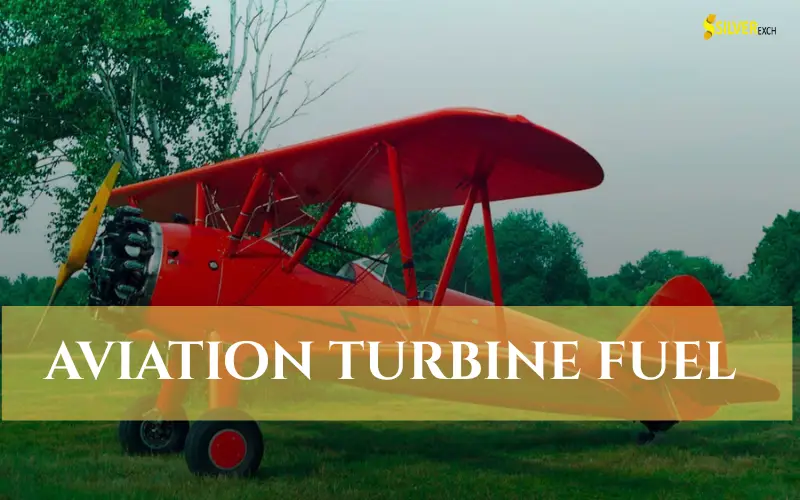Aviation turbine fuel (ATF) is a critical component in the aviation industry, powering a wide range of aircraft from commercial airliners to military jets. At Silverexch247, we understand the importance of selecting the right fuel for your aviation needs. This comprehensive guide will explore the various aviation turbine fuel options available, their characteristics, and how to choose the best one for your aircraft. Whether you are a pilot, aircraft operator, or aviation enthusiast, this guide will provide valuable insights into aviation turbine fuel options.
Understanding Aviation Turbine Fuel
Aviation turbine fuel is specifically designed for use in gas turbine engines, which are commonly found in commercial jets, military aircraft, and some helicopters. The primary types of aviation turbine fuel include Jet A, Jet A-1, and Jet B. Each type has unique properties that make it suitable for different applications.
Types of Aviation Turbine Fuel
- Jet A:
- Overview: Jet A is a kerosene-based fuel primarily used in the United States. It has a high flash point of 38°C (100°F), making it safer to handle and store.
- Applications: Jet A is commonly used in commercial aviation and is suitable for most turbine engines.
- Characteristics: Jet A has a freezing point of -40°C (-40°F), which allows it to perform well in various weather conditions.
- Jet A-1:
- Overview: Jet A-1 is the most widely used aviation turbine fuel globally. It is similar to Jet A but has a lower freezing point of -47°C (-52.6°F), making it ideal for international flights and operations in colder climates.
- Applications: Jet A-1 is the standard fuel for commercial airlines and is accepted at airports worldwide.
- Characteristics: The lower freezing point of Jet A-1 ensures reliable performance at high altitudes and in extreme temperatures.
- Jet B:
- Overview: Jet B is a blend of kerosene and gasoline, designed for use in colder climates. It has a lower flash point and is less commonly used than Jet A and Jet A-1.
- Applications: Jet B is primarily used in regions with extremely low temperatures, where its low freezing point is advantageous.
- Characteristics: While Jet B offers excellent cold-weather performance, it is less stable than Jet A and Jet A-1, making it less suitable for general use.
Sustainable Aviation Fuel (SAF)
In recent years, the aviation industry has increasingly focused on sustainability and reducing carbon emissions. Sustainable aviation fuel (SAF) is a promising alternative to traditional aviation turbine fuels. SAF is produced from renewable resources, such as plant materials and waste, and can significantly reduce the carbon footprint of aviation.
- Benefits of SAF:
- Reduced Emissions: SAF can lower greenhouse gas emissions by up to 80% compared to conventional jet fuel.
- Compatibility: SAF is designed to be compatible with existing aircraft engines and fuel infrastructure, making it a viable option for airlines looking to reduce their environmental impact.
- Regulatory Support: Many governments and aviation organizations are promoting the use of SAF through incentives and regulations, encouraging the industry to adopt more sustainable practices.
Choosing the Right Aviation Turbine Fuel
Selecting the appropriate aviation turbine fuel for your aircraft is crucial for ensuring optimal performance and safety. Here are some factors to consider when choosing the right fuel:
1. Aircraft Type
Different aircraft may require specific types of aviation turbine fuel. Consult your aircraft’s operating manual or manufacturer guidelines to determine the recommended fuel type. Most commercial jets are designed to operate on Jet A or Jet A-1, while some specialized aircraft may require Jet B.
2. Operating Environment
Consider the operating environment when selecting aviation turbine fuel. If you frequently fly in colder climates or at high altitudes, Jet A-1 may be the best option due to its lower freezing point. Conversely, if you operate primarily in warmer regions, Jet A may suffice.
3. Availability
Fuel availability is another critical factor to consider. Ensure that the type of aviation turbine fuel you choose is readily available at your departure and destination airports. Jet A and Jet A-1 are widely available at most commercial airports, while Jet B may be more limited.
4. Cost
Fuel costs can vary significantly depending on the type of aviation turbine fuel and market conditions. While it’s essential to consider the cost of fuel, prioritize safety and performance over price. Choosing the right fuel can lead to better engine performance and efficiency, ultimately saving you money in the long run.

5. Environmental Impact
As the aviation industry moves towards sustainability, consider the environmental impact of your fuel choice. If possible, opt for sustainable aviation fuel (SAF) to reduce your carbon footprint and contribute to a greener future for aviation.
Aviation Fuel Storage and Handling
Proper storage and handling of aviation turbine fuel are essential to maintain its quality and performance. Here are some best practices to ensure safe and effective management of ATF:
1. Storage Facilities
Aviation turbine fuel should be stored in dedicated tanks designed to prevent contamination and degradation. These tanks must be constructed from materials that resist corrosion and are equipped with proper ventilation to minimize the risk of vapor buildup.
2. Contamination Prevention
Contamination can significantly affect the performance of aviation turbine fuel. To prevent this, ensure that all storage and transfer equipment is clean and free from debris. Regularly inspect and maintain fuel storage systems to identify and address any potential contamination sources.
3. Temperature Control
Temperature fluctuations can impact the stability of aviation turbine fuel. It is crucial to store fuel at a consistent temperature to prevent condensation and the formation of water, which can lead to microbial growth and corrosion. Implement temperature monitoring systems to ensure optimal storage conditions.
4. Regular Testing
Conduct regular testing of aviation turbine fuel to ensure it meets the required specifications and performance standards. Testing should include checks for water content, particulate matter, and other contaminants. This proactive approach helps identify issues before they affect aircraft performance.
5. Safe Handling Practices
When handling aviation turbine fuel, follow established safety protocols to minimize risks. This includes using appropriate personal protective equipment (PPE), implementing spill response plans, and training personnel on safe fuel handling procedures.
Conclusion
Aviation turbine fuel is a vital component of the aviation industry, and understanding the various options available is essential for aircraft operators and enthusiasts alike. At Silverexch247, we are committed to providing comprehensive information on aviation turbine fuel options, helping you make informed decisions for your aviation needs. By considering factors such as aircraft type, operating environment, availability, cost, and environmental impact, you can select the right fuel to ensure optimal performance and safety. As the industry moves towards sustainability, exploring options like sustainable aviation fuel (SAF) can contribute to a greener future for aviation.






